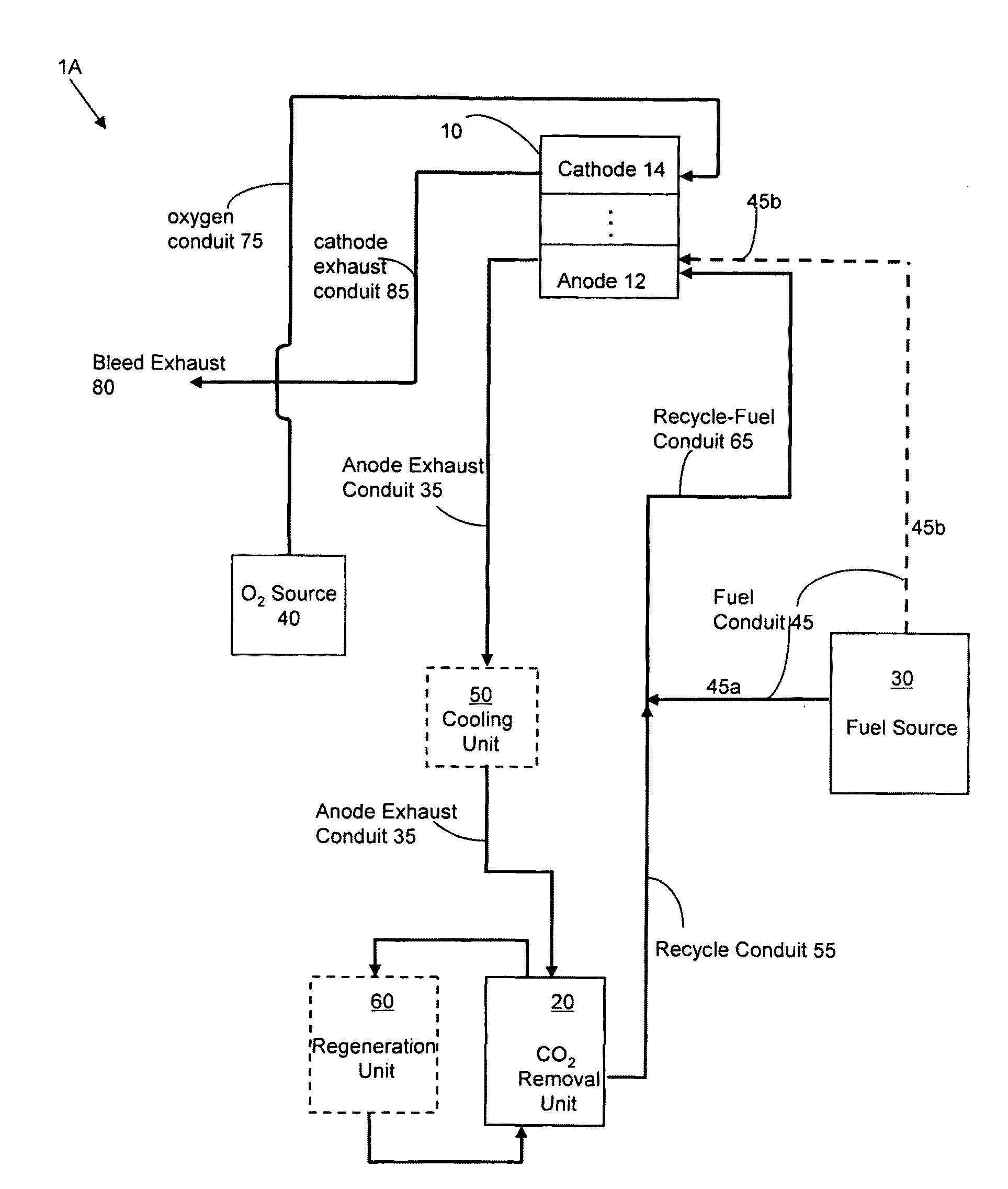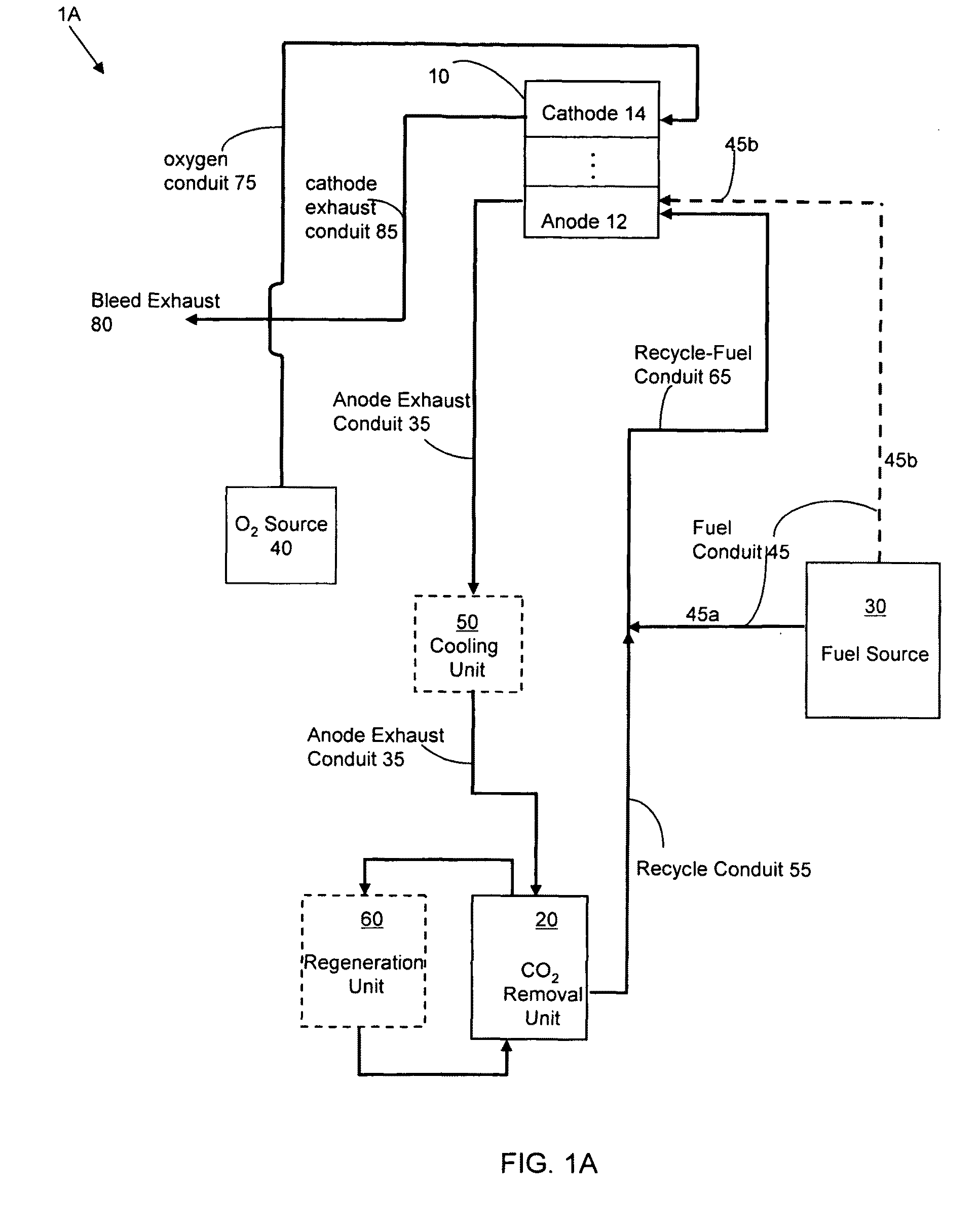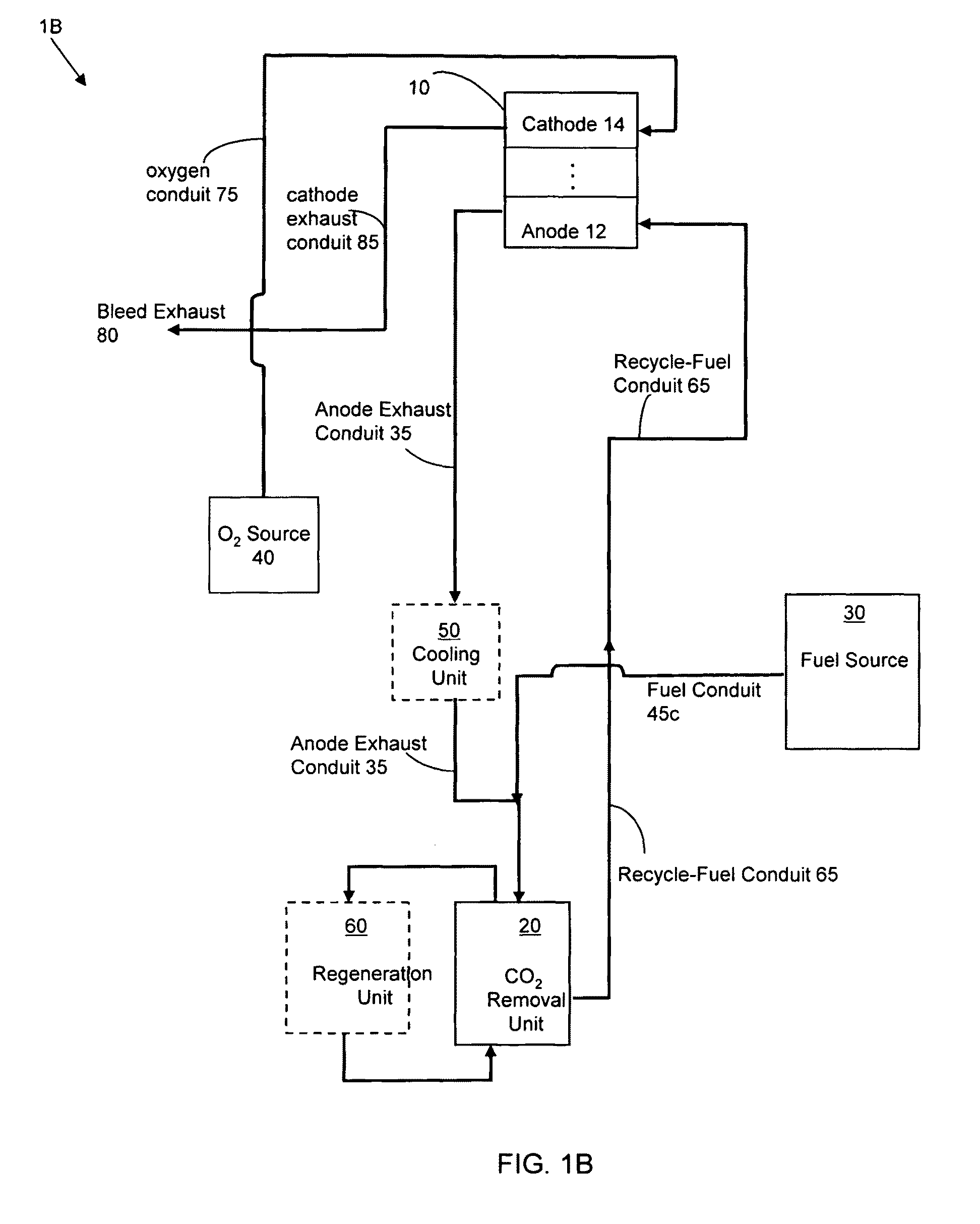Fuel cell system having recycle fuel conduit in fluid communication with fuel cell assembly and carbon dioxide removal unit
a fuel cell and fluid communication technology, which is applied in the direction of electrochemical generators, membrane technology, chemistry apparatus and processes, etc., can solve the problems of relatively low thermal stress on the fuel cell(s) and relative low heat generation at the fuel cell(s) of the fuel cell system, and achieve high fuel concentration, improve system efficiency, and high fuel concentration
- Summary
- Abstract
- Description
- Claims
- Application Information
AI Technical Summary
Benefits of technology
Problems solved by technology
Method used
Image
Examples
Embodiment Construction
[0022]The foregoing will be apparent from the following more particular description of example embodiments of the invention, as illustrated in the accompanying drawings in which like reference characters refer to the same parts throughout the different views. The drawings are not necessarily to scale, emphasis instead being placed upon illustrating embodiments of the present invention. In the figures, an optional unit(s) or component(s), and an alternative conduit(s) are indicated with a dashed box and a dashed arrow, respectively.
[0023]FIGS. 1A and 1B show certain embodiments of the fuel cell systems of the invention, fuel cell system 1 (hereinafter, collectively referring to fuel cell system 1A-1B of FIGS. 1A-1B and fuel cell systems 1C-1F of FIGS. 2, 5 and 6 which are described below). Fuel cell system 1 includes fuel cell assembly 10; carbon-dioxide (CO2)-removal unit 20; anode exhaust conduit 35 connecting fuel cell assembly 10 and CO2-removal unit 20; fuel source 30 that is in...
PUM
| Property | Measurement | Unit |
|---|---|---|
| temperatures | aaaaa | aaaaa |
| temperature | aaaaa | aaaaa |
| temperature | aaaaa | aaaaa |
Abstract
Description
Claims
Application Information
 Login to View More
Login to View More - R&D
- Intellectual Property
- Life Sciences
- Materials
- Tech Scout
- Unparalleled Data Quality
- Higher Quality Content
- 60% Fewer Hallucinations
Browse by: Latest US Patents, China's latest patents, Technical Efficacy Thesaurus, Application Domain, Technology Topic, Popular Technical Reports.
© 2025 PatSnap. All rights reserved.Legal|Privacy policy|Modern Slavery Act Transparency Statement|Sitemap|About US| Contact US: help@patsnap.com



